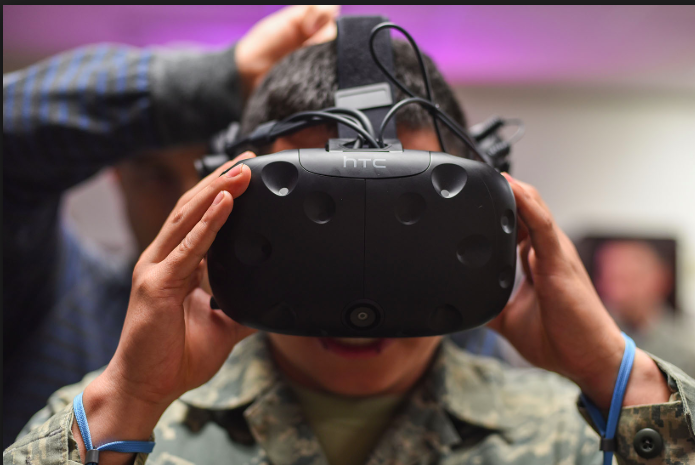How Virtual Reality and AI Technology Is Changing the Travel Industry
Virtual reality (VR) allows consumers to experience any locale at any time. The technology is so advanced that it can trick viewers into thinking they’re visiting a faraway place in real life.
It incorporates head mounted displays, headphones and hand-held controllers so that users can navigate their surroundings.
VR systems immerse viewers in a 3D artificial setting that is so realistic that users feel as though they are in a real-life environment. The goal of virtual reality developers is to provide an environment that parallels real-life experiences.
In the past, the technology has served as an entertainment and gaming platform for early adopting consumers. Now, VR programmers have been able to produce environments that are so effective that they are suitable for training, high-risk simulations and public-facing consumer applications.
Technology giants such as Google, Microsoft and Facebook have invested billions of dollars to claim their piece of the virtual reality pie. Soon, the technology may become a part of everyday life.
Some travel experts believe that VR may serve as a solution for improving the passenger experience, as well as terminal operations. In the United States, air travel infrastructure is sorely in need of an upgrade. During major holidays, flight terminals are packed to capacity with local and international travelers.
As a result, there are many issues that air travel enterprises must address to improve the flight experience for passengers. Fortunately, technology, such as virtual reality, artificial intelligence and data driven problem-solving, is helping air transportation firms develop the transportation centers of the future.
How Technology Is Improving the Travel Experience
Throughout 2018, air transportation firms around the world have found innovative ways to incorporate new technologies into their operations. Today’s airports are interactive, providing passengers with enhanced flight status updates, improved entertainment features and heightened security measures.
For instance, some major airlines are testing biometric equipment that allows passengers to board flights unassisted. While there’s been talk of incorporating this technology for some time, airlines are just starting to explore its possibilities. In the future, biometrics could revolutionize the air transportation industry.
Virtual reality and artificial intelligence are also enhancing the customer service experience for airline passengers. Technologies such as AI powered chatbots help passengers get answers to questions faster. Artificial intelligence gained significant traction in the airline industry during 2017.
Some airlines allow consumers to purchase tickets through popular social media apps such as Facebook Messenger. Airline executives hope to use AI for other purposes, such as real-time predictive pricing and aircraft maintenance monitoring.
Innovations Make Our Airways Safer and More Convenient
More than 50-percent of airlines expect to implement high-tech information beacons before the end of 2018. For now, airline officials are still evaluating the most effective ways to use the innovation. At the same time, airlines and airports are leveraging the Internet of Things (IoT) to improve their operations as well as passenger satisfaction. Most of today’s travelers use their smart devices to find out information about flight arrivals, luggage statuses, terminal layouts and directions.
Rather than using an app, passengers can now view detailed flight information displayed on beacons positioned at TSA and customs checkpoints as well as taxi drop off areas.
Airlines are also using virtual reality and artificial intelligence technologies to improve security, creating new job opportunities. Virtual reality is improving and transforming security and operations for air transportation firms and other enterprises in the United States.
With advanced technology comes the need for increased security, a development that is creating jobs. Resultingly, America’s Enterprises need innovative problem solvers can use technology to keep America’s airways safe. Now is the time for individuals who wish to pursue a stable and prosperous career to seek training in cyber security.
A New Take on Travel
Consumers who want to experience the world in luxury, but are short on time, can now travel around the globe without taking flight. A Tokyo firm is using virtual reality technology to allow passengers to travel without leaving the ground.
The company offers passengers a full flight experience. Passengers are treated to a four-course gourmet meal served by airline attendants and a virtual trip augmented with official announcements, safety demonstrations and ambient flight sounds. The meals are prepared by gourmet chefs and highlight the cuisine of various destinations.
Virtual reality is indeed changing how people travel. While some firms are using the technology to create an imagined travel experience, consumers are still more interested in real exploration.
Fortunately for airlines, the technology will likely never replace real travel. However, airports and airlines will continue to incorporate virtual reality, artificial intelligence and other technologies to deliver the best possible experience for passengers.

